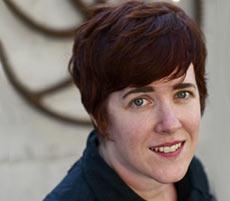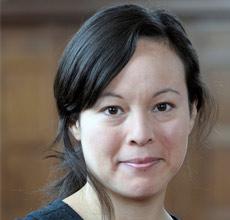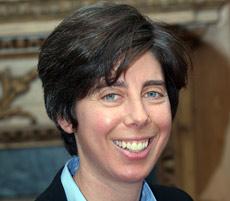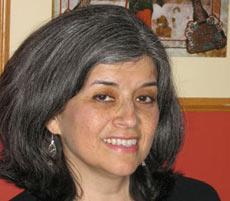Courses Associated With the Judith Butler 2011 Flexner Lectureship
Five Bryn Mawr courses are being offered in connection with Judith Butler’s residency at Bryn Mawr as the Flexner Lecturer. The curricula of these five courses build upon Butler’s previous works and her new topic. Faculty members teaching these courses will incorporate Butler’s three lectures and the scholar herself into curricular and co-curricular activities.
Anthropology 322: The Anthropology of the Body
Instructor: Melissa Pashigian
This course explores the concept of the “body” through the lens of anthropology. The body has figured prominently in the discipline in the development of anthropological theory and as a site of inquiry, analysis, and interpretation. This course examines a diversity of meanings and interpretations of the body in anthropology and explores its material and metaphoric use. The course will expose students to anthropological theories and methods of studying the body and social difference via a series of topics including the construction of the body in medicine, through identity, race, gender, and sexuality and explored through cross-cultural comparison. The approaches range from examining the performance of identity and self to the circulation of body parts. The goals of the course are to expose students to ways of thinking of the body; to gain analytical skills; and gain experience doing primary and secondary source research.
English 333: Lesbian Immortal
Instructor: Kate Thomas
This class springs from a fissure in queer studies: much scholarship focuses on queer subjectivity’s turn backwards to history to find its footing in the present, and queer theory has denounced futurity as belonging to “hetero-time.” Lesbian Immortal proposes that in between these concerns, lesbian literature has repeatedly figured itself in alliance with tropes of immortality and eternity. Using primary texts from the nineteenth and twentieth centuries, we will explore topics such as: fame and notoriety, time warps and mythology; epistemic erotics; sexual seasonality; the death drive and the uncanny; feminist temporality; fin de siècle manias for mummies and séances.
History of Art 334: Topics in Film: Picturing the Invisible
Instructor: Homay King
In what ways do film, photography, and digital media shape the space of public appearance? Who and what can be represented, and who and what remain on the fringes of the visible world? To what extent are political, social, and cultural recognition predicated on the capacity to appear in photographs, on film, on television, on the internet, and in institutional spaces like museums and classrooms? Starting from the premise that political potential and recognition are firmly tied to the ability to appear in lensed images, we will explore topics such as 1) how invisible and marginal subjects are pictured or rendered invisible, 2) how existing repertoires of images affect who and what can appear, 3) how the censorship, circulation, and exhibition of filmed images factor into public visibility. Films may include Standard Operating Procedure, Paris Is Burning, Videograms of a Revolution, and others; readings include texts by Hannah Arendt, Judith Butler, Rey Chow, and others.
History of Art 380: Topics in Contemporary Art: Body Politics: Performance and Performativity in Modern Art
Instructor: Lisa Saltzman
The seminar will introduce students to the idea that art and visual culture might be the site of theoretical, political, even ethical experimentation and possibility and immerse them in the project of re-thinking the aesthetic and ethical implications of the bodies that structure visual modernity and its inheritance. Framed by the foundational writings of Judith Butler on gender and performativity, and animated and complicated throughout by her Flexner lectures, the seminar will allow students to test and explore the implications of her field-defining contributions, turning to instances of bodily “representation” in painting and photography, collage and montage, performance and installation, video and film.
Spanish/Comparative Literature 322: Queens, Nuns, and Other Deviants in the Modern Iberian World
Instructor: María Cristina Quintero
The course will examine a number of literary, legal, and historical texts from the early modern Iberian world through the lens of gender studies. The overarching concern of the course will be the multiple representations of women’s bodies in sixteenth and seventeenth-century Spain and the New World. The course is divided around three topics: royal bodies (women in power), cloistered bodies (women writing within the gendered and paradoxical space of the convent), and deviant bodies (figures at the edges of legal and gender normativity. Among the figures we will consider are: Queen Isabel of Castile, St. Teresa of Avila, Sor Juana Inés de la Cruz, and Catalina de Erauso (the so-called “Lieutenant Nun” who lived most of her life as a man). The course will be taught in English and is designed with the non-major and non-Spanish speaking student in mind. Spanish majors may take this course for major credit, provided they do most of the reading and writing in Spanish.





